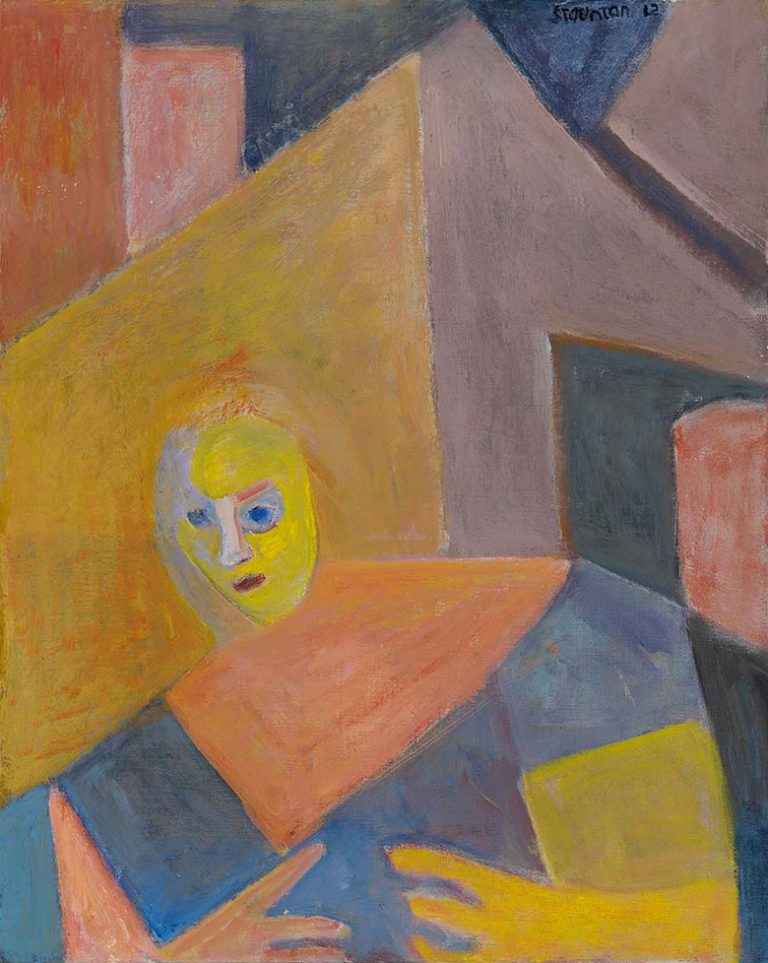We acknowledge the Traditional Owners of the land on which the Queensland Art Gallery | Gallery of Modern Art stands and recognise the creative contribution First Australians make to the art and culture of this country.

Madonna Staunton / Australia b.1938 / Anxiety 2012 / Synthetic polymer paint on canvas board / 56.2 x 45.8cm (framed) / Purchased 2014 with funds from the estate of Jessica Ellis through the Queensland Art Gallery | Gallery of Modern Art Foundation / Collection: Queensland Art Gallery | Gallery of Modern Art / © Estate of Madonna Staunton
Madonna StauntonAnxiety 2012
On Display: QAG, Gallery 12
In the late 1990s, Madonna Staunton signalled her return to painting, and her works began to demonstrate the kind of philosophical, psychological and emotional concerns that would occupy her thereafter. Staunton’s Anxiety depicts a sole figure nearly ejected from the picture plane, tumbling out of this synthetic space, preoccupied and faltering. The figure’s hands seem to repel each other like magnets of matching polarity, signifying a body and mind in all-consuming turmoil.
Intelligently, the cityscape that surrounds them is articulated in a condensed geometric arrangement — a post-cubist strategy linked to her tonal collage, but coded with emotional sensitivity provoked by the wrestling of humanist ideals and hostile circumstance. Brilliant, piercing blue eyes strike out from a sophisticated layering of complimentary tones — pink, yellow, mauve and more blue — all worked over each other with a delicate brush action.
Born and raised in Murwillumbah, in northern New South Wales, Madonna Staunton made Brisbane her home, first exhibiting her paintings with the Royal Queensland Art Society (1956–61), and then the Brisbane Contemporary Art Society (1966–71). From the mid 1970s, Staunton abandoned painting to concentrate on collage and assemblage. These works have a complex lineage that can be traced through Dada, Constructivism, Fluxus and Abstract Expressionism.
Staunton gave new life to found paper, images and things, combining just a few items in works of restrained and cool harmony. As former Gallery curator, Tim Morrell, stated:
A play between randomness and precision animates virtually all Madonna Staunton’s assemblage work. Her sensitivity to tonal and formal arrangement always remains acute during this process and the results are austerely beautiful.1
Staunton returned to painting later in life, committing her eloquence to figurative painting, and these late representational works reveal insights that come with maturity and deep reflection.
Endnotes:
1 Timothy Morrell, ‘Madonna Staunton: Institute of Modern Art, Brisbane, 13 March – 18 April 2003 [review]’, Artlink, June 2003, <artlink.com.au/articles/2421/madonna-staunton>, viewed August 2020.